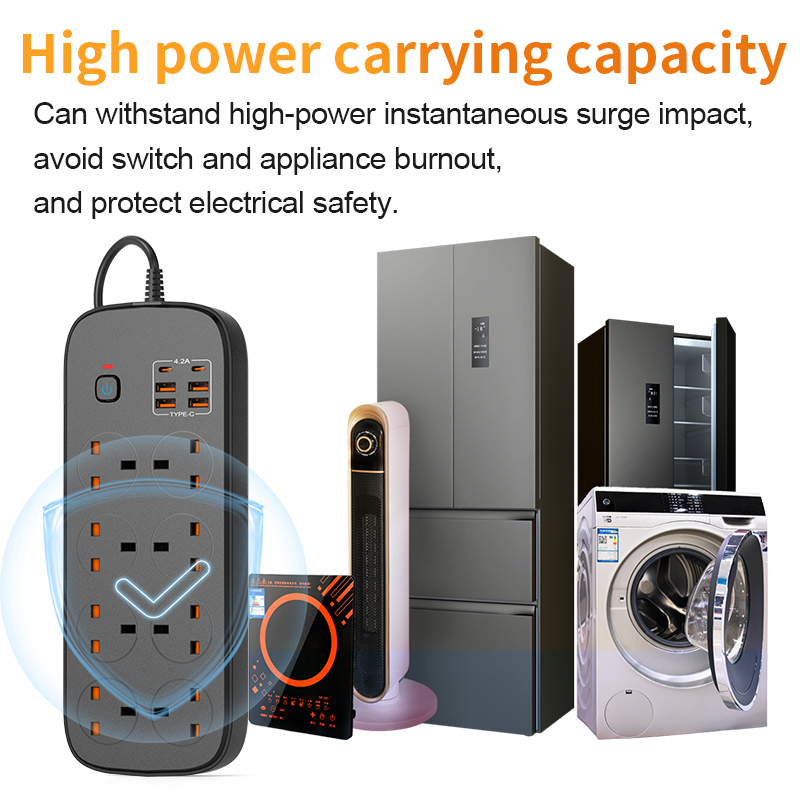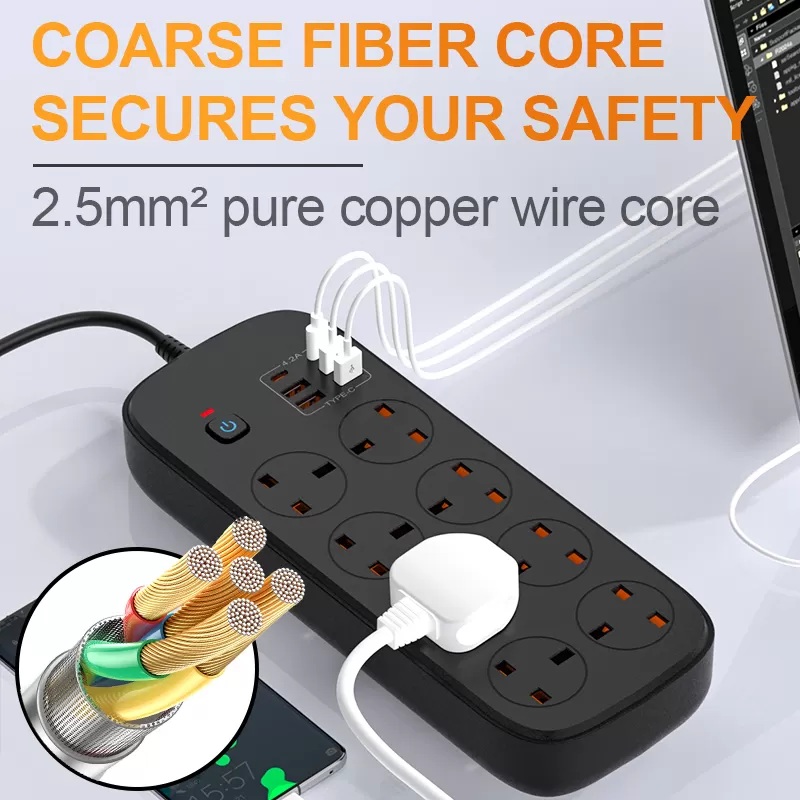Power strips are essential for homes, offices, and industrial setups, but poor choices can lead to safety risks. This guide covers critical factors like power rating, safety, and design to help you make informed decisions.
1. Define Your Usage Scenario
Household Use: Prioritize child-safe shutters and surge protection for TVs or refrigerators.
Office Use: Opt for 6+ outlets and USB ports for multi-device charging.
Industrial Use: Choose heavy-duty models (≥4000W) with dust/water resistance and emergency switches.

2. Certifications & Safety Standards
Mandatory: CCC (China), UL (USA), CE (EU) for basic safety.
Advanced: RoHS (hazard-free) or PSE (Japan) for eco-compliance.
3. Socket Design & Layout
Spaced Sockets: ≥40mm between outlets to prevent crowding.
Individual Switches: Save energy by turning off unused devices.
Smart Mix: USB-C (PD 30W) + AC outlets for phones and laptops.
4. Cable & Material Quality
Cable Core: Pure copper (≥1.0mm²), avoid copper-clad aluminum.
Housing: Flame-retardant ABS/PC (UL94 V-0 certified) with ≥1mm thickness.
Length: 1.5m–3m ideal; too long causes tangling, too short restricts placement.

5. Protection Features
Basic: Overload/short-circuit protection (auto circuit breaker).
Advanced: Surge protection (≥1000J absorption), voltage spike suppression.
Outdoor Use: IP54 rating for water and dust resistance.
6. Smart Features
Remote Control: Wi-Fi/Bluetooth connectivity for scheduled on/off via apps.
Energy Monitoring: Track real-time usage to save costs.
Auto Shutoff: Cut power when devices are fully charged.